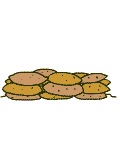
GREAT BRITAIN MKIII TURTLE
Model: MKIII TURTLE
Year: 1941/1943
Garrison marking: FFL II 1944
As World War II progressed, it became clear that the helmet used by the British Army (MKII Tommy) was outdated in terms of the protection it provided, as the war type had also changed to "Move Warfare".
Thus, in 1940, a committee made up of medical experts from the Ministry of War and the Ministry of Provisions was created to carry out a study for the design of a new helmet for the British army, the adoption of the helmet was also studied. new hull designUSA M1.
Of the newly developed model, which was called the MKIII, the first helmets were delivered in July 1941 to the auxiliary and passive defense forces on a trial basis.
Finally, in December 1942, it was decided to adopt the new model for the British army and that it would begin to be distributed in November 1943.
Scheme comparing the protection zones of the proposed helmets:
This new approved design was nicknamed de TURTLE(turtle) because of the similarity of its shape to said animal. Its use began to be seen in combat with the English and Canadian troops landed in Normandy in June 1944, coexisting with the use of the model MK IIuntil the end of the war.
Its mass distribution was not until 1945 due to the large stock of helmets of the MKII model that still existed.
Apart from improving the combatant's protection (its main purpose), this design also allowed the use of the inner linings used in the MKII, and the stainless steel bead, placing the hook for the chinstrap 55 mm from the bead.
The new helmet model, still keeping the same type of trim as the MKII, incorporated a new chinstrap model, also called MKIII, which differed from the previous one by not having springs and being made entirely of elastic fabric.
The specimen in the collection is dated 1944. Blackish gray in color with its original paint, the color in which it was distributed to some troops for the first time at the Normandy landings on June 6, 1944.


